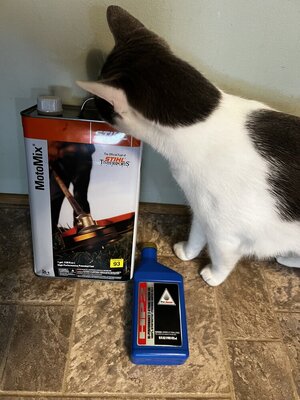Fully agree. Another thing people don’t think about is the other end of the bar, where the chain whips around the sprocket. The same thing happens at the sprocket end as the nose of the bar, meaning as the chain whips around it puts “downward” stress on the crank. Tighter chain minimizes that the same as it does the wear in the end of the bar. I’ve cut with a lot of guys who swear that a chain that’s so loose it hangs off the belly of the bar is better for the saw because it doesn’t have to work as hard to turn, maybe they’re right, in my mind the minimizing of the inertia with a tighter chain can cut down on the downward force the pto crank seal/bearing have to deal with and saves the nose of the bar a little, not to mention making the chain more “accurate” cleaning Dutchmans and such. One thing I’ll add is when the saw and chain are hot don’t crank them as hard as when they’re cold, that’s when the forward stress (In my mind) could become too much after it cools down and the parts all condense from their hot, expanded state. Hopefully that made sense







